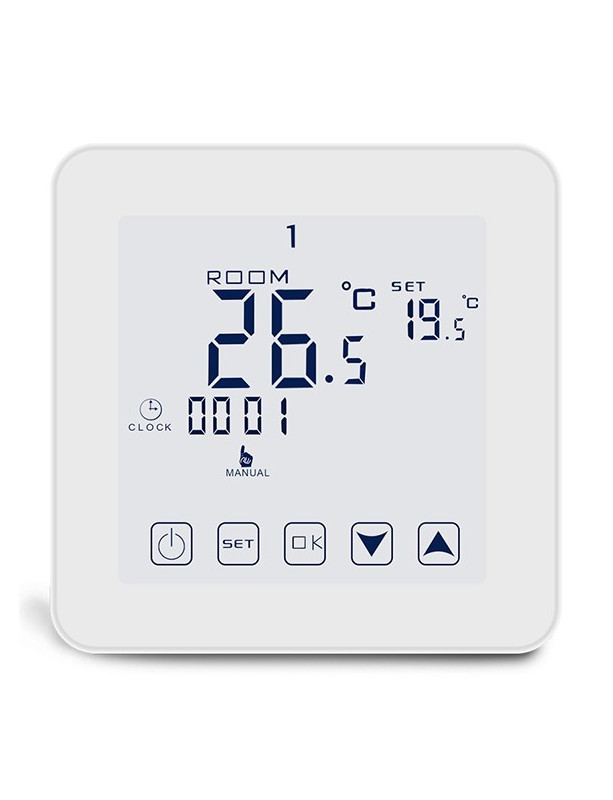thermostat
A thermostat is a device that regulates the temperature inside a room. The room thermostat offers the possibility of regulating the heating or cooling system according to the needs of the user. The thermostat can have up to 9 different set programs. A digital room thermostat can be wired or wireless.
A thermostat is a device used to control a boiler or other heating source. It always maintains the temperature you have set in the room or the entire household. A room thermostat will ensure that your home is pleasantly warm, and at the same time you will save on heating costs. Room thermostat according to the connection method
According to the method of connection, we distinguish room thermostats into three types. Devices with a classic connection to the electrical network are standard, plug-in room thermostats are a more intuitive option, and a wireless room thermostat is considered the most convenient option. Standard room thermostats as a long-term servant
Standard room thermostats are often installed with the boiler in one operation, but it is possible to purchase and install them separately. Due to the necessity of connecting it to the electrical network, it is better to leave this work to an expert. A standard room thermostat cannot discharge and usually offers advanced heating adjustment functions.

Mechanical thermostats (non-electric)
The simplest thermostats are mechanical: they use the expansion of liquids and gases directly to close a heating or cooling valve. To regulate the cooling of automobile engines, thermostats with a wax filling are used, which open or close the circulation of the cooling liquid. Thermostats with metal bellows filled with gas or alcohol are used to regulate heating elements (radiators) of central heating. Similar regulators maintain the temperature of water in mixer taps.
Electric thermostats
Electromechanical thermostats maintain, for example, the temperature of an electric iron: there is a bimetallic contact in the iron, which turns off the current supply to the heating element when the set temperature is reached; when the temperature drops, the contact turns on again. For more sensitive and accurate regulation, e.g. in the range of 1 °C, a longer bimetal is needed, which is usually wound into a spiral.
Electronic thermostats
Electronic thermostats are controlled by semiconductor sensors, the signal of which is amplified and then processed either analogically or digitally. The electronics then controls the most common relay-switching/opening contacts (heating/cooling). Electronic temperature sensors are divided into the following types:
The resistance temperature sensor consists of a thermistor, the resistance of which changes according to the ambient temperature. The temperature characteristic can be PTC or NTC. The unit for resistance is the ohm and is denoted Ω.
Voltage temperature sensor - there is a voltage at the output of the analog sensor that changes according to the ambient temperature. The unit for voltage is the volt and is denoted V.
Digital temperature sensor - at the output of the sensor, information is transmitted in digital form, the numerical value changes according to the ambient temperature. The output of such a sensor is resistant to external interference and the length of the cable connection (resistance or capacitance of the line).
Hysteresis
A particular problem is the hysteresis of the thermostat, the delay in the response to a regulatory intervention: e.g. when the valve closes the hot water supply to the radiator, the temperature in the room will continue to rise because the radiator is full of hot water. Conversely, when the temperature drops, the valve will open, but it will take a long time for the radiator to be filled with warm water. As a result, the temperature will fluctuate strongly. Therefore, more complex systems are used that predict and regulate the temperature development before the desired values are reached.
